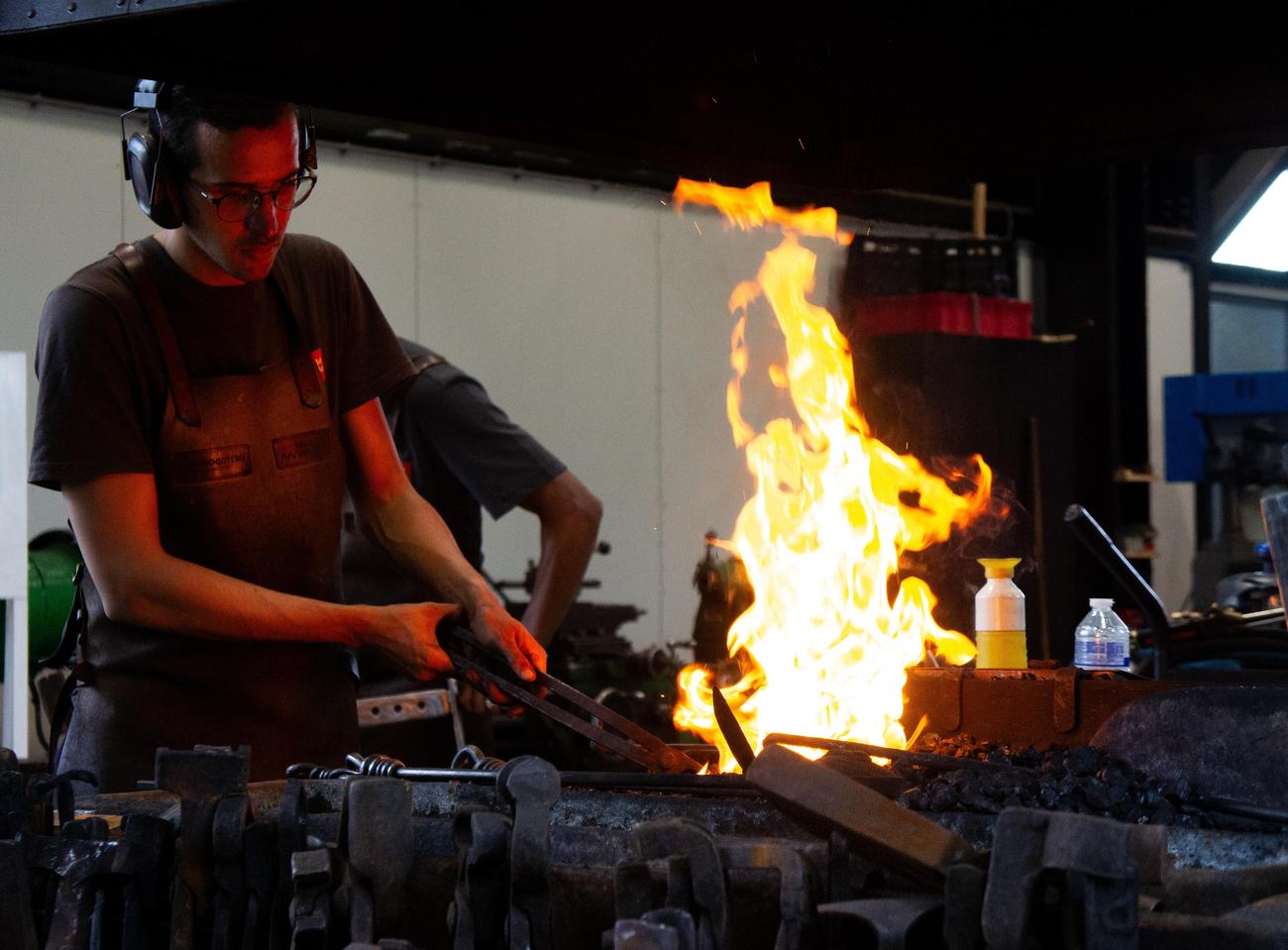Are you fascinated by the wonders of metallurgy? Have you ever wondered how metals with diverse properties can be manipulated and utilized in various industries? If so, you’re in for a treat. In this article, we delve into the captivating world of metallurgy and unravel its marvels. But wait, there’s more – we aren’t just exploring the basics; we’re going deep, bringing you insights from a highly knowledgeable and experienced metallurgist. Get ready to embark on a journey that will reveal the hidden intricacies of metals and their applications in practical scenarios. Get ready to be amazed by the profound wisdom of an expert in the field.

Metallurgy
Welcome to the fascinating world of metallurgy, where science meets artistry and metal takes on new dimensions of strength, durability, and beauty. As an experienced metallurgist, I have devoted my career to uncovering the hidden secrets and intricate properties of various metals. Today, I invite you on a journey to explore the marvels of metallurgy and gain valuable insights from an expert in the field.
The Essence of Metallurgy
Metallurgy, at its core, is the study of metals and their alloys – the building blocks that shape our modern world. It delves into the physical and chemical behaviors of metallic elements and their compounds, shedding light on the secrets behind their remarkable properties. From understanding the structure and composition of metals to enhancing their performance through alloy design and heat treatment techniques, metallurgists play a vital role in numerous industries, including aerospace, automotive, construction, and more.
“What makes metallurgy truly spectacular is the ability to transform mere raw materials into extraordinary products that withstand the test of time.”
The Journey of Creation: Extractive Metallurgy
Before we can unlock the full potential of metals, we must first extract them from their ores and refine them into purer forms. This intricate process, known as extractive metallurgy, involves combining various physical and chemical techniques to separate valuable metals from their mineral sources. From ancient civilizations to modern-day technologies, our quest to obtain metals has shaped human history and paved the way for societal advancements.
“Extractive metallurgy harnesses the power of knowledge and innovation to turn ores into precious metals, igniting the flames of progress.”
Exploring the Iron-Carbon Alloy System
One of the most remarkable achievements in metallurgy lies in our understanding of the iron-carbon alloy system. This system encompasses steels and cast irons, which have revolutionized industries worldwide. By carefully controlling the carbon content and applying specific heat treatments, we can tailor the properties of these alloys to meet a vast range of applications – from high-strength structural components to wear-resistant tools.
“Within the iron-carbon alloy system lies a treasure trove of possibilities, waiting to be harnessed and shaped into the foundations of our modern world.”
Unveiling the Hidden World with Metallography
To truly grasp the secrets held within metals, we turn to metallography – a technique pioneered by the brilliant mind of Henry Clifton Sorby. Metallography allows us to examine the microscopic and macroscopic structures of metals, revealing the intricate patterns and flaws that determine their mechanical properties. Through the lens of metallography, we unlock the key to optimizing material performance and ensuring product reliability.
“With metallography as our guide, we unravel the hidden stories etched into the very fabric of metals, empowering us to shape a future built on strength and resilience.”
From Gold to Iron: A Journey Through Time
The history of metallurgy dates back millennia, tracing the footsteps of civilizations as they unlocked the potential of various metals. From the earliest use of gold, silver, and copper to the discovery of bronze and the advent of the Iron Age, the story of metallurgy intertwines with human ingenuity and progress. Across different cultures, smelting techniques and alloy development marked major milestones in our pursuit of harnessing the power of metals.
“Metallurgy holds the key to understanding our collective history – a testament to our innate curiosity and boundless imagination.”
Harnessing the Power of Metallurgy: Pros and Cons
As with any field, metallurgy encompasses both advantages and challenges. Let’s explore some of the pros and cons:
Pros:
- Enhanced Material Performance: Metallurgy allows us to tailor the properties of metals to suit specific applications, resulting in improved performance and durability.
- Innovation and Progress: By pushing the boundaries of alloy design and heat treatment techniques, metallurgy drives technological advancements across various industries.
- Sustainable Solutions: Metallurgical processes can contribute to sustainability efforts by enabling the recycling and repurposing of metals, reducing waste and environmental impact.
Cons:
- Cost and Complexity: Advanced metallurgical processes may carry higher costs and require specialized equipment and expertise.
- Environmental Impacts: Certain extraction and refining methods can have environmental consequences, necessitating responsible practices and continuous improvement.
“Metallurgy holds immense promise, but mindful application and responsible practices are vital to harness its power for the greater good.”
Conclusion: Unveiling New Horizons
In this glimpse into the captivating world of metallurgy, we have traversed ages and delved into the intricate nature of metals. It is through the lens of an experienced metallurgist that we have uncovered the limitless potential of harnessing metals’ properties for innovation, strength, and resilience. With a balance between knowledge and curiosity, metallurgy paves the way for a brighter future, where new horizons await exploration.
“In the realm of metallurgy, as in life itself, the wonders lie not merely in the metals we shape, but in the transformative journey they take us on.”
So join me as we unravel the marvels of metallurgy, exploring the boundless possibilities and gaining profound insights into the world of metals, alloys, and their applications.
Steel is a fascinating material that has shaped our modern world in countless ways. Whether you’re interested in the history of steel or its applications in construction, transportation, and beyond, you’ll be captivated by these 100 Facts About Steel. From its ancient origins to its incredible strength and versatility, steel has played a pivotal role in human progress. Explore the incredible world of steel by clicking here: 100 Facts About Steel and prepare to be amazed by what you discover.
FAQ
Question 1:
What is metallurgy?
Answer 1:
Metallurgy is a domain of materials science and engineering that studies the physical and chemical behavior of metallic elements, their inter-metallic compounds, and their mixtures, which are known as alloys.
Question 2:
What is extractive metallurgy?
Answer 2:
Extractive metallurgy is the practice of removing valuable metals from an ore and refining the extracted raw metals into a purer form.
Question 3:
What are some key metals studied in metallurgy?
Answer 3:
Much effort has been placed on understanding the iron-carbon alloy system, including steels and cast irons.
Question 4:
How do metallurgists study metals?
Answer 4:
Metallurgists study the microscopic and macroscopic structure of metals using metallography, a technique invented by Henry Clifton Sorby.
Question 5:
What are some significant developments in metallurgy throughout history?
Answer 5:
The earliest recorded metal employed by humans appears to be gold, followed by silver, copper, tin, and meteoric iron. Bronze, an alloy of copper and tin, was discovered in the Near East around 3,500 BC, marking the beginning of the Bronze Age. The extraction of iron from its ore was developed by the Hittites around 1200 BC, beginning the Iron Age. Ferrous metallurgy has been developed and practiced in various cultures and civilizations throughout history, including the Middle East, Egypt, China, India, Japan, and Europe.
- Unlock Filipino Culture: A Deep Dive into Traditions and Practices - April 23, 2025
- Unlock Spanish Culture: Insights & Opportunities Now - April 23, 2025
- White Spirit Uses & Substitutes: A Deep Dive for Pros & DIYers - April 23, 2025
















